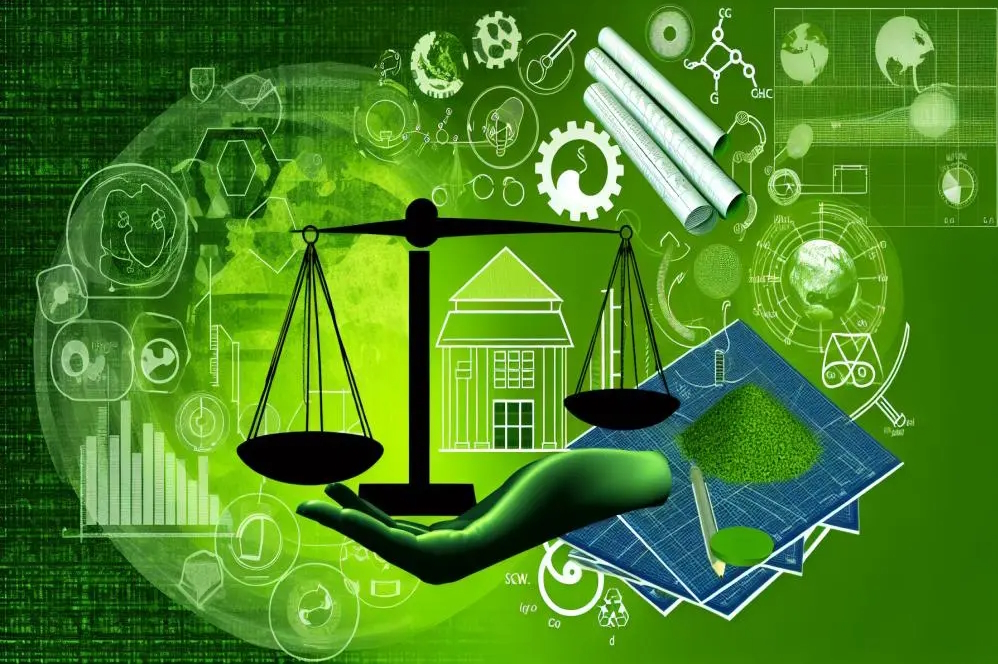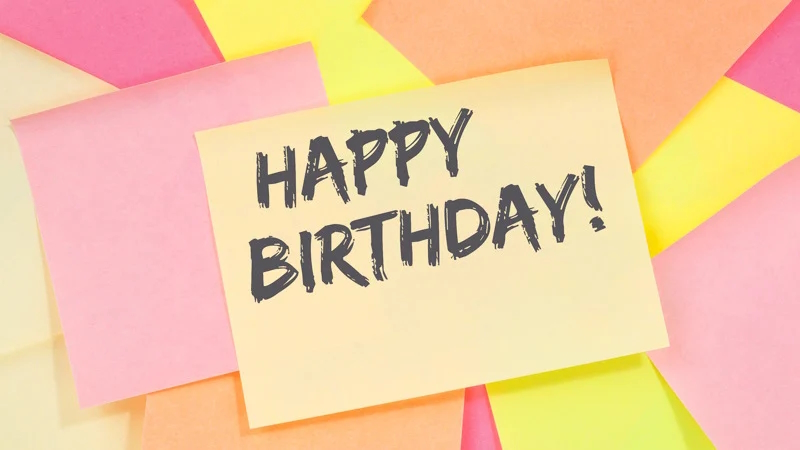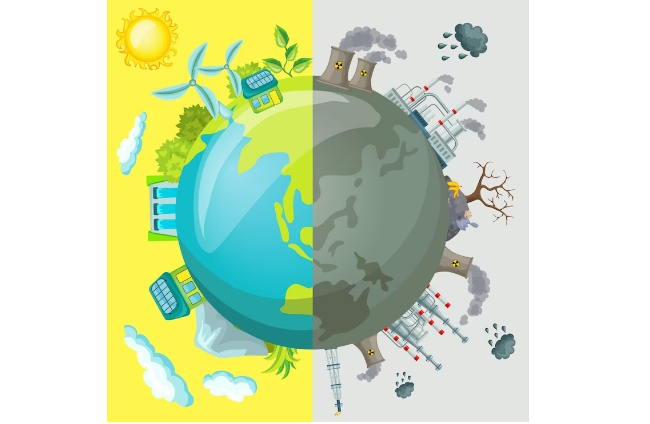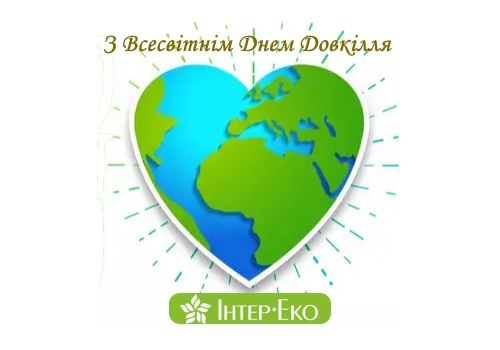- Industrial ecology and environmental protection
- info@inter.eco
- +380 96 345 45 20
- +380 432 699 096
Integrated environmental permitting

When and who needs to undergo EIA
05.06.2025
Happy Birthday!
14.09.2025Frequently Asked Questions on the Law of Ukraine “On Integrated Industrial Pollution Prevention and Control”
Entry into force and validity of existing permits
This Law comes into force on 08.08.2025. At the same time, in accordance with Article 29(3) of this Law, permits for emissions of pollutants into the atmosphere by stationary sources, permits for special water use and permits for waste treatment operations obtained by operators of facilities shall expire from the date of obtaining an integrated environmental permit, but not later than four years after the date of entry into force of this Law.
During the said four-year period, operators of facilities carrying out the activities specified in the Annex to this Law have the right to obtain a permit for emissions of pollutants into the atmosphere from stationary sources, a permit for special water use and a permit for waste treatment operations in accordance with the procedure established by law before obtaining an integrated environmental permit.
Thus, the law establishes a transitional period of four years to mitigate the consequences of the entry into force of this law, given the new and stringent requirements and conditions for business entities.
Novelty of the Law – Conclusions of the BAT
The main essence of this Law is that the integrated environmental permit is issued in accordance with the conclusions of the best available technologies and management methods (BAT).
A BAT conclusion is a document that identifies the best available technologies and management methods, contains their description, emission limit values determined in accordance with the best available technologies and management methods, requirements for monitoring emissions, resource and energy consumption in the production process, and measures to eliminate pollution caused by economic activity.
The conclusions on best available technologies and management methods are developed and approved on the basis of the European Union legislation. The content, form and structure of these conclusions should correspond to the content, form and structure of the relevant act of European Union legislation as fully and accurately as possible.
In essence, the law provides that within four years from the date of its entry into force, an enterprise must determine whether it can meet the highest and best EU environmental standards or plans to cease its operations.
Permission to “death” (in case of choosing the option of termination of activities)
The operators of installations intending to decommission the installation after the entry into force of this Law shall attach to the application for an integrated environmental permit a statement of commitment to decommission the installation, indicating the justification and grounds for determining the final lifetime of the installation, which may not exceed 10 years from the date of entry into force of this Law.
The terms of the integrated environmental permit for the facilities referred to in this clause shall be determined on the basis of environmental standards in force at the time of submission of the application for the integrated environmental permit and taking into account the deadlines for implementation of measures to reduce emissions of pollutants into the air approved by strategic documents at the national level and/or regional environmental protection programs.
In the integrated environmental permit issued to the operator of such an installation, the permitting authority shall determine the final term of its operation, as specified by the operator of the installation in the statement of commitment to decommission the installation. After the expiration of the final period of operation, the installation shall be prohibited. Such an integrated environmental permit may be amended only within the final lifetime of the installation, and the final lifetime of such installations shall not be subject to revision. The terms and conditions of such an integrated environmental permit, determined at the time of its issuance, are not subject to revision.
Modernization and measures (if BAT implementation is chosen)
The conclusions of the best available technologies and management methods shall be applied no earlier than four years after the date of termination or lifting of martial law, except for facilities that are put into operation for the first time, to which the conclusions of the best available technologies and management methods shall be applied from the date such conclusions come into force.
Given that the EU emission and discharge limits are much stricter than ours, their application to most enterprises in Ukraine will mean the need to modernize production at the level of technology and implement environmental protection measures on a large scale. Such significant changes will require new construction or, at the very least, significant reconstruction.
Despite the enormous need for investment for these purposes, the law does not provide for sources of financing for such projects or create other necessary conditions to ease the economic burden on business entities. In fact, the economic component, despite its critical importance, is excluded from the scope of the legislation and is entirely the responsibility of the enterprises.
Contrary to European practice, where sources of funding and necessary resources are first found and then projects are implemented, we are demanding the introduction of new requirements regardless of cost, which automatically entails the creation of new bureaucratic barriers and corruption risks for business entities.
Cost and timeframe
The fee for issuance of an integrated environmental permit (amendments thereto) is 30 subsistence minimums for able-bodied persons (as of 2025 – UAH 90840) established by law as of January 1 of the calendar year in which the relevant application for an integrated environmental permit (amendments thereto) is submitted to the permitting authority. The funds for issuance of the integrated environmental permit (amendments thereto) are credited to the state budget.
The aforementioned paragraph indicates the cost of issuing a permit only, excluding the preparation of the application (development of the necessary project documentation), which, given that it will include issues of emissions, special water use, waste treatment (if necessary) and other mandatory components, as well as taking into account the approval procedure in the Ministry of Environment, will be predictably significantly different from the usual procedures at the local level.
The full procedure for approving an integrated environmental permit in accordance with the law is 120 days. However, this period does not include the time required to prepare the application (development of project documentation), so the actual total period for obtaining such a permit, including the necessary preparation of documentation, mandatory public hearings, all approval procedures and obtaining conclusions, etc. can be estimated at one year or more.
Public hearings
In the process of obtaining an integrated environmental permit, the law provides for mandatory public hearings. The procedure for holding the hearings is set out in the Resolution of the Cabinet of Ministers No. 194 of February 21, 2025 “On Approval of the Procedure for Organizing and Holding Public Hearings in the Process of Issuing an Integrated Environmental Permit”.
Public hearings are held by regional state administrations. The report of the facility operator must contain information on: the facility; nature and amount of expected emissions, discharges and wastes from the facility; proposed technology and technical solutions to prevent and reduce emissions and wastes from the facility; measures to monitor emissions; baseline report, justification of derogation and derogation assessment (if submitted); other information on the facility determined by the facility operator.
All comments and proposals submitted orally during the public hearings, as well as written comments and proposals, are recorded in the minutes of the public hearings. The absence of public comments and suggestions shall be recorded in the relevant section of the public hearing minutes.
Based on the results of the public discussion, the permitting authority shall prepare a report on the public discussion, which summarizes the received public comments and proposals and indicates how, in the context of the integrated environmental permit, the public comments and proposals submitted in accordance with this Article were taken into account, partially taken into account or reasonably rejected.
Impracticability and transfer (and possibly revision of the list of industries)
Pursuant to Article 29(3), a transitional period of four years from the date of entry into force of this law is provided for, when integrated environmental permits will be implemented in parallel with conventional permits.
According to clause 2 of the same article, the conclusions of the best available technologies and management methods shall be applied no earlier than four years after the date of termination or lifting of martial law, except for facilities that are put into operation for the first time.
Article 13 of the Law provides for derogations when less stringent maximum permissible standards are applied for a period not exceeding seven years.
All of this suggests that the authors of the law are aware of the very serious and complex challenge facing the Ukrainian industry after the implementation of the new legislation under this law.
However, even these postponements and derogations may not be enough, if only because the EU has been going for decades and is still far from fully achieving the goals of this legislation.
Conclusion
The main problem that will hinder the realization of the goals of this legislation is that the state does not offer any sources of funding, any economic incentives or exemptions, while demanding from enterprises fundamental changes in the maximum permissible environmental impact standards, which cannot be achieved without significant investments in production. It is well known that a policy of exclusively carrots and no sticks is not effective and does not work.
The integrated environmental permit includes and regulates more than a dozen components of the economic activity of enterprises. In addition to the aforementioned air emissions, special water use, and waste treatment, it also includes noise and vibration, land protection, energy efficiency, emergency and transitional modes of operation, public health protection, control, monitoring, and audit.
The administration of such a monster permit through a complex and lengthy approval procedure at the level of the Ministry of Environment will be too burdensome for any company. And for large ones, due to constant changes, it may not even have time to leave the walls of the ministry before the next revision.
Currently, there are still many gaps that are unclear how they will be reconciled with the existing legislation and practice of administration and issuance of permits, so we should definitely expect a revision in the future, if not of the legislative provisions and implementation deadlines, then at least of the interpretation and attitude to certain requirements and conditions for which there is already a certain vision.
Therefore, taking into account the above and the postponement possibilities provided for by the Law, everyone has the right to decide for themselves how soon they should become a party to the process under the new legislation, but it seems that the process of modernization to meet modern EU standards of environmental impacts of the enterprise will be inevitable.





